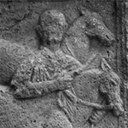0005 Geographies of Provincialism in Roman Sculpture
Identifiers (Article)
Identifiers (Files)
Abstract
Focusing on Roman Britain but using examples across the empire, this article examines the relevance of geography to the form and distribution of "provincialized" classical imagery in the Roman period. This must be explained with reference to the competence of the craftsmen, the expectations of provincial artists and viewers, and geological factors. In some cases geology rather than culture seems to have a surprisingly large role in determining the presence and absence of sculpture. Attention to the material complexities of the geography of provincial sculpture provides a useful foil to considering Roman imperial art as a pervasive visual culture.
Statistics


License

This work is licensed under a Creative Commons Attribution-NonCommercial-NoDerivatives 4.0 International License.



